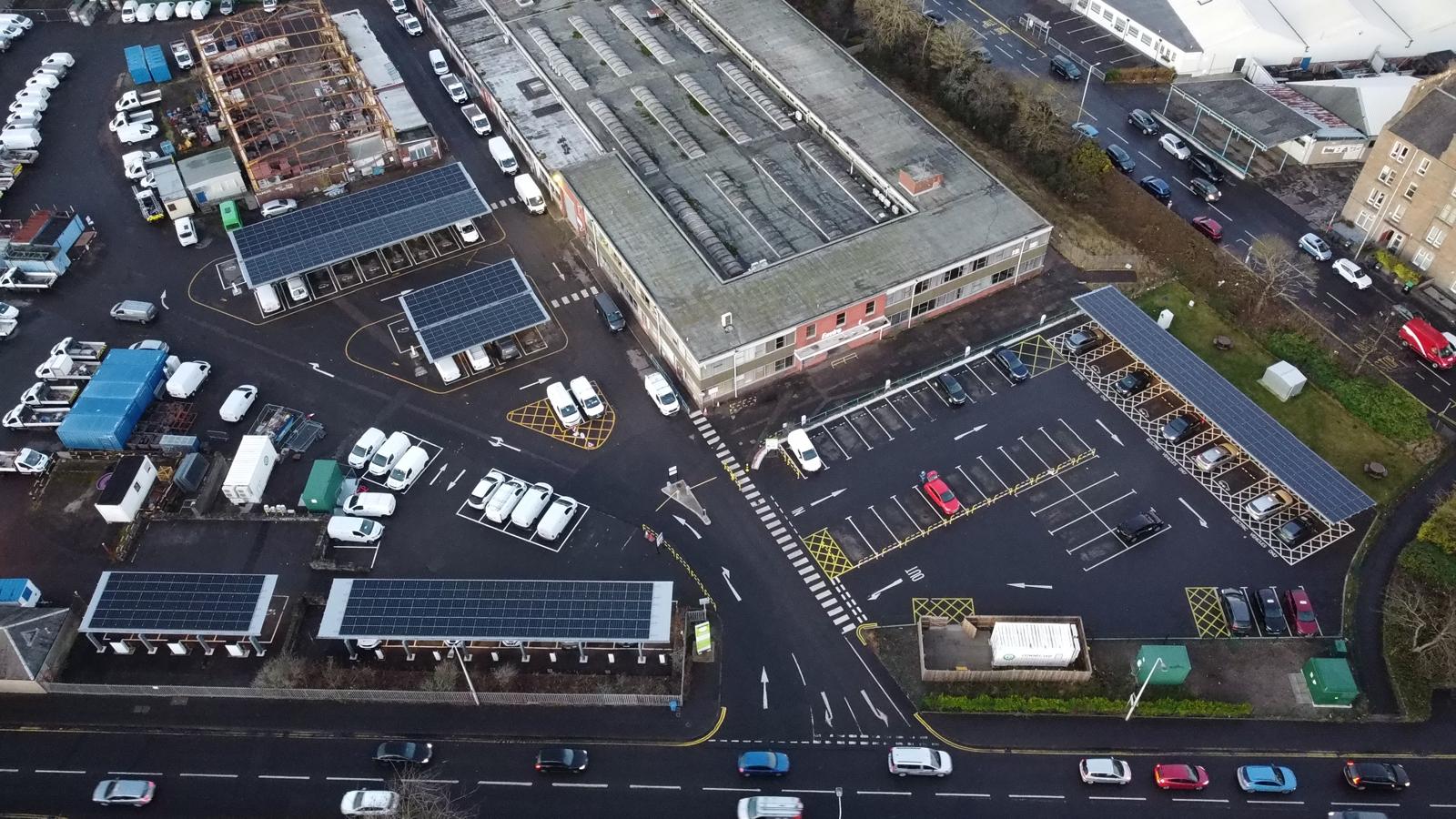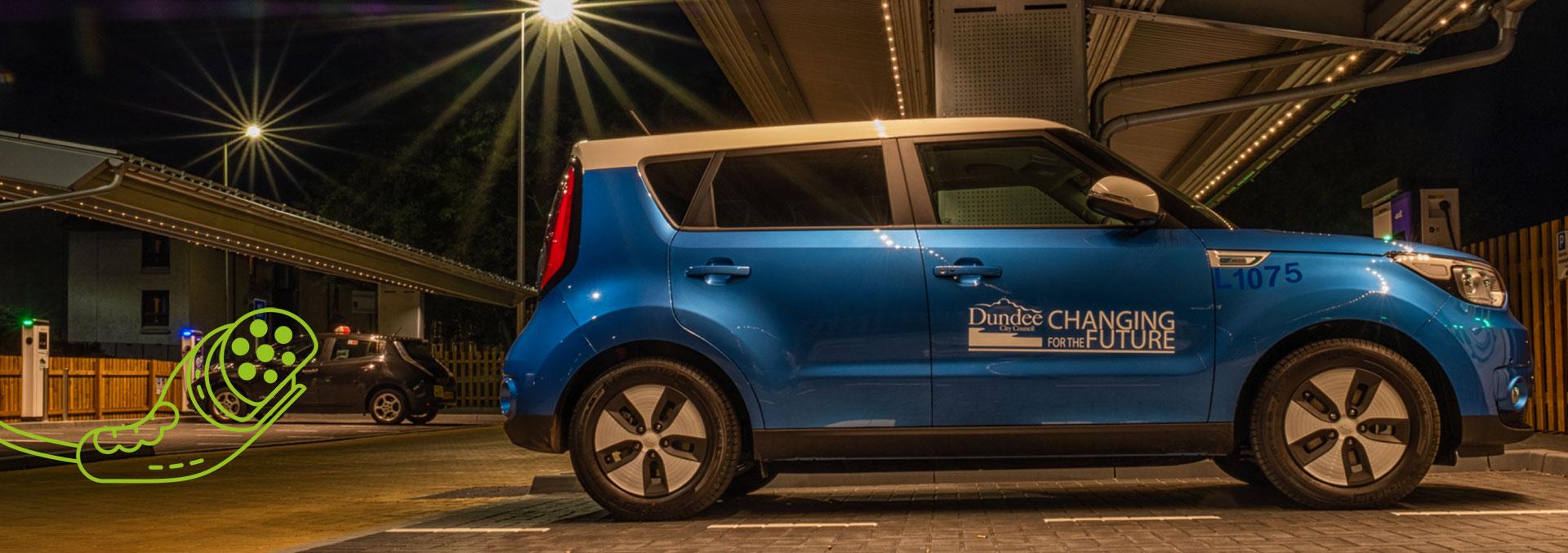Depot Projects
Since the launch of the first electric vehicles into its fleet in 2011, Dundee City Council has become a pioneering force in expanding its fleet with electric cars, vans and even RCVs. Following the city-wide climate emergency declared in 2019 and in line with the Council’s 2038 net zero target, the previous fleet composition has been carefully revaluated. Currently, the council boasts over 700 vehicles, 35% of which are fully electric, which is one of the highest compositions of local authorities in the UK.
To support the large-scale electric vehicles deployment, Dundee has invested in its depot EV charging infrastructure, which now includes a variety of slow and rapid chargers distributed across the city and planned according to various depot requirements.
Marchbanks Depot
The Marchbanks depot, home to the council’s main workshop, is the base for many fleet vehicles including all electric RCVs. Through introducing these fully electric RCVs into the council fleet in 2021, Fleet employees have been able to engage with a UK first cutting-edge technology comprising of five packs of 60kWh batteries. Community engagement played a vital role in the promotion of the new RCVs in Dundee through a campaign shared in schools and the local press to name the new RCVs, and as a result, all eight RCVs have obtained their famous names, including Leonardo DiCharge-io and Ohm Alone.
Eight fast chargers (25kW) were installed for electric RCVs and street sweepers whose batteries recharge overnight for the next morning's service. To accommodate the depot’s everyday requirements, slow chargers were installed for office workers using cars and vans to support daily operations, while rapid chargers on the site are used for topping up carpool vehicles.
.png)
Marchbanks was recently expanded with a 118kWp photovoltaics system along with a battery storage unit. Solar panels installed on the workshop's roof supply all mechanical work with electricity during the day, and the dynamic load management system enables the council to switch the distribution flow between the energy storage system and the electric vehicle chargers at night.
.png)
Clepington Road Depot
The Clepington Road depot, which we believe is the first of its kind of any local authority, is a key component of Dundee’s electrification reform. Formerly used for coal storage and fuelling ICE vehicles, the site has recently undergone significant renovations. The fuel tanks and contaminated soil were removed and replaced with 25 fast (7kW) chargers available for overnight and weekend charging and 3 rapid (2x50kW and 1x100kW) chargers for topping up and quick charging of emergency callout vehicles. This is enough to power 200 electric vans located at the depot.
The depot along with the public rapid charging hub, which was developed on the same site, are covered with solar canopies which generate power to fuel charging sessions and ultimately, take pressure off the grid. The photovoltaics system is further supported by two Connected Energy battery storage units on site, each of which can store 100MWh of electricity each year. This system is being used to capture any excess solar as well as charging from the grid at off-peak times when tariffs are cheaper and electricity is less carbon-intensive.


